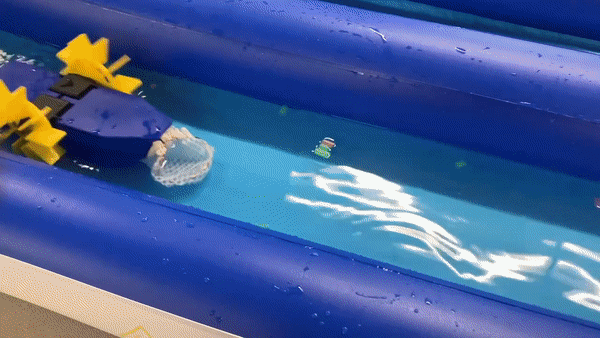As a young child, I was always fascinated with robots. I can remember seeing them in movies and TV shows and being captivated by how they moved and interacted with people. I just couldn’t fathom how they were able to move and speak on their own. But without access or exposure, this excitement faded over time. This is normally how a spark or an interest dies in kids preventing them from exploring their passions further.
Elementary students are naturally curious and eager to learn new things, making it the perfect age to introduce them to the world of robotics and computer science. Robotics can be a fun and innovative way to explore concepts such as computational thinking, problem-solving, coding, and engineering. Unlike the robots you see in futuristic movies, robotics is much more diverse and accessible than most people realize. Robots can be created using simple materials and techniques that are perfect for students as young as kindergarten age. Integrating robotics into the curriculum can not only introduce elementary students to the world of computer science and robotics but also make other subjects come alive and be more engaging for students.

The importance of diversity and equity in CS education cannot be overstated. Women and minorities are underrepresented in the tech industry, often due to a lack of exposure and opportunity in STEM fields. By integrating robotics into elementary schools, we can help to address this disparity and break down the barriers that have traditionally kept women and minorities out of the tech industry. This can provide opportunities for students of all backgrounds to learn about robotics and encourage them to pursue future careers in technology or utilize these skills in any profession they choose.
Some effective ways I have integrated robotics into my curriculum include:
- Encouraging students to create artistic sketches of their robotics projects before building them to help students visualize their ideas and think creatively about the design of their robots. Incorporating art allows students to share ideas to create a final product that is both functional and visual. This can help students develop critical thinking skills and introduces them to the practical aspects of design.
- Integrating physical computing components into a curriculum significantly captivated my students’ interests in robotics. Physical computing components such as sensors, servos, and microcontrollers allow students to learn and experiment with the fundamental concepts of robotics. These components allow students to design and build robots that can interact with their environment and perform specific tasks to allow students to work with real-world technologies and develop solutions to real-world problems.
- Using paper circuits can be an interactive way to teach young students about circuitry principles. With a few basic supplies like copper tape, LEDs, and batteries, students can create simple circuits that light up and add a visual element to their projects. This activity not only makes projects more visually appealing but also helps students understand the principles of circuitry in a fun and interactive way.
- 3D printing is another way to incorporate art into robotics education. Many 3D printers use CAD software suitable for elementary students. This allows them to see their designs in a tangible prototype form first while helping students understand design and engineering principles.
- Using recyclable materials in robotics education can help align lessons with the global goals of sustainability and responsible consumption and production. By using materials such as cardboard, plastic bottles, and paper to create robots, elementary students can learn about the importance of sustainability and creatively design robots that are environmentally friendly.
Introducing robotics to our youngest learners will give students the time to develop an interest. It’s hard for anyone to comprehend what is possible without exposure. By providing students with hands-on opportunities to create their own robots, educators can provide excitement, and experience to inspire the next generation of innovators.
About the Author

Tonya Coats has been a K-6th educator in Southern California for over 20 years. She holds a B.S. in Computer Information Systems and a M.A in Instructional Technology from California State University, San Bernardino. She has a strong passion for computer science and maker-based learning. Her students have participated in numerous educational conferences and student showcases to show educators and their peers what is possible with computer science. Tonya believes exposing her students to computer science at a young age will give them the exposure to build interest and learn how to apply these skills to solving real-world problems. She is a 2022 micro:bit champion, a 2022 CSTA Honorable Mention, and also recently elected to serve as an IACUE Board Member, a regional affiliate of CUE.

